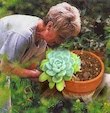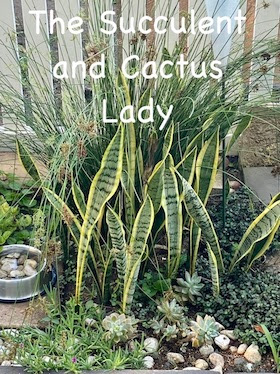.
About me

🌿 I've been gardening ever since a child, when I spent time with my father in his vegetable garden. But my fascination with Echeverias started in the 1980's, when my father gave me a pot with five Echeverias, which turned out to be E. imbricata. At first I wasn't much interested in them and planted them in some obscure corner of the garden and completely forgot about them. How great was my surprise when, a couple of months later, I noticed that they had spread and made a beautiful display - I was hooked!
Pages
Thursday 11 February 2016
Monday 1 February 2016
Aloe aristata
Aloe aristata (Guinea-fowl Aloe, Lace Aloe) is a species of evergreen flowering perennial dwarf aloe in the family Xanthorrhoeaceae, from South Africa. It is commonly cultivated as a garden plant around the world. It prefers well-drained soils, but can tolerate a range of rainfall systems. It can also tolerate temperatures down to -7°C, due to its adaptation to cold mountain tops. However it may need to be grown indoors or under glass in extremely cold temperate regions, to give it some winter heat. This clumping species readily produces large numbers of off-sets, which can be separated and planted as a means of propagation.
My original Aloe aristata now with lots of pups
When not flowering Aloe aristata is often mistaken for a Haworthia specie.
Plants are stemless and form clumps of up to twelve rosettes that are between 100mm and 150mm in diameter.
My Aloe aristata flowered for the firs time this last spring and I was absolutely ecstatic!
Watering: Will tolerate slight over-watering and drought conditions.
Flower: Flowers are a dull-red or pinkish colour, tubular in shape and slightly curved down at the end of a fairly long stalk. Plants flower during the month of November.
I've been bringing mine in every winter, but I have quite a few now, propagated from the pups, and I'm considering leaving one or two outside for this coming winter to see how they react.
Aloe aristata sharing an enamel bowl with some peanut cactus and an Haworthia
::
Subscribe to:
Posts (Atom)
























